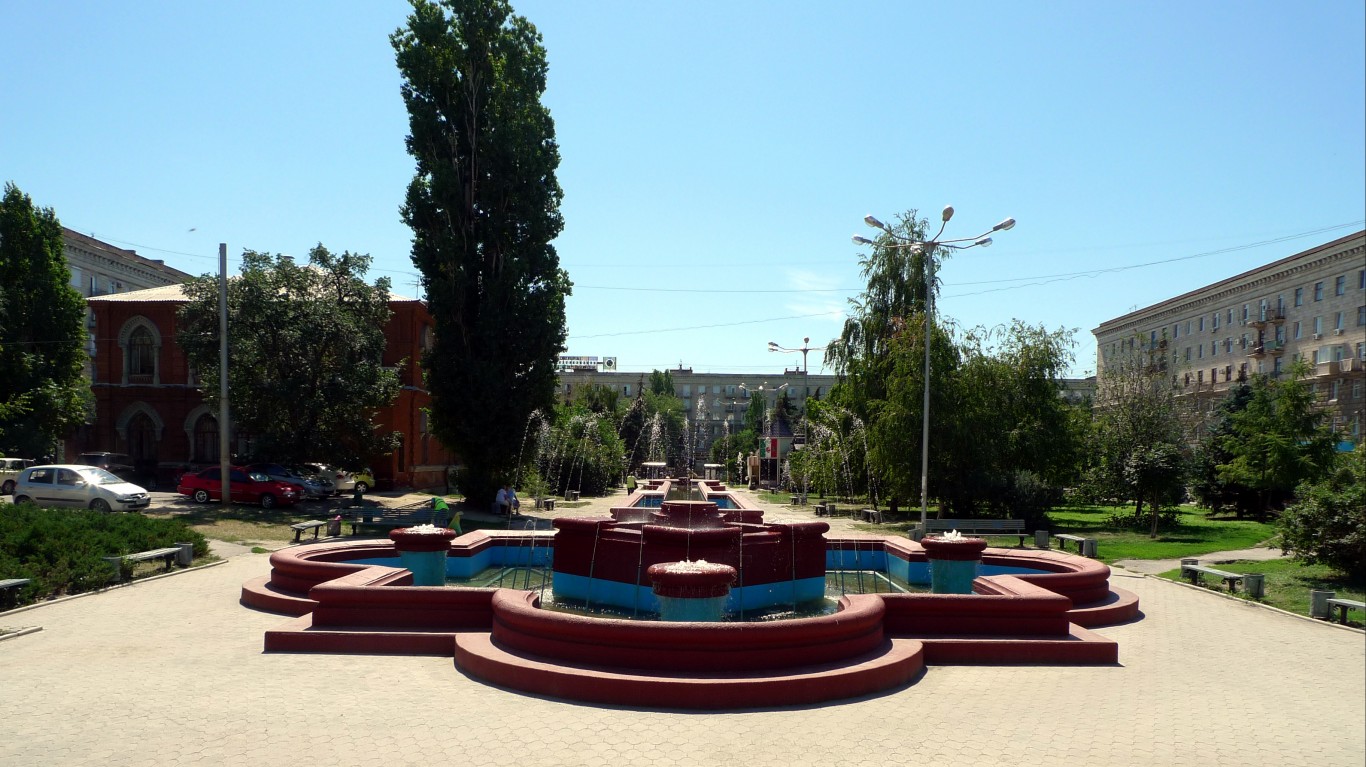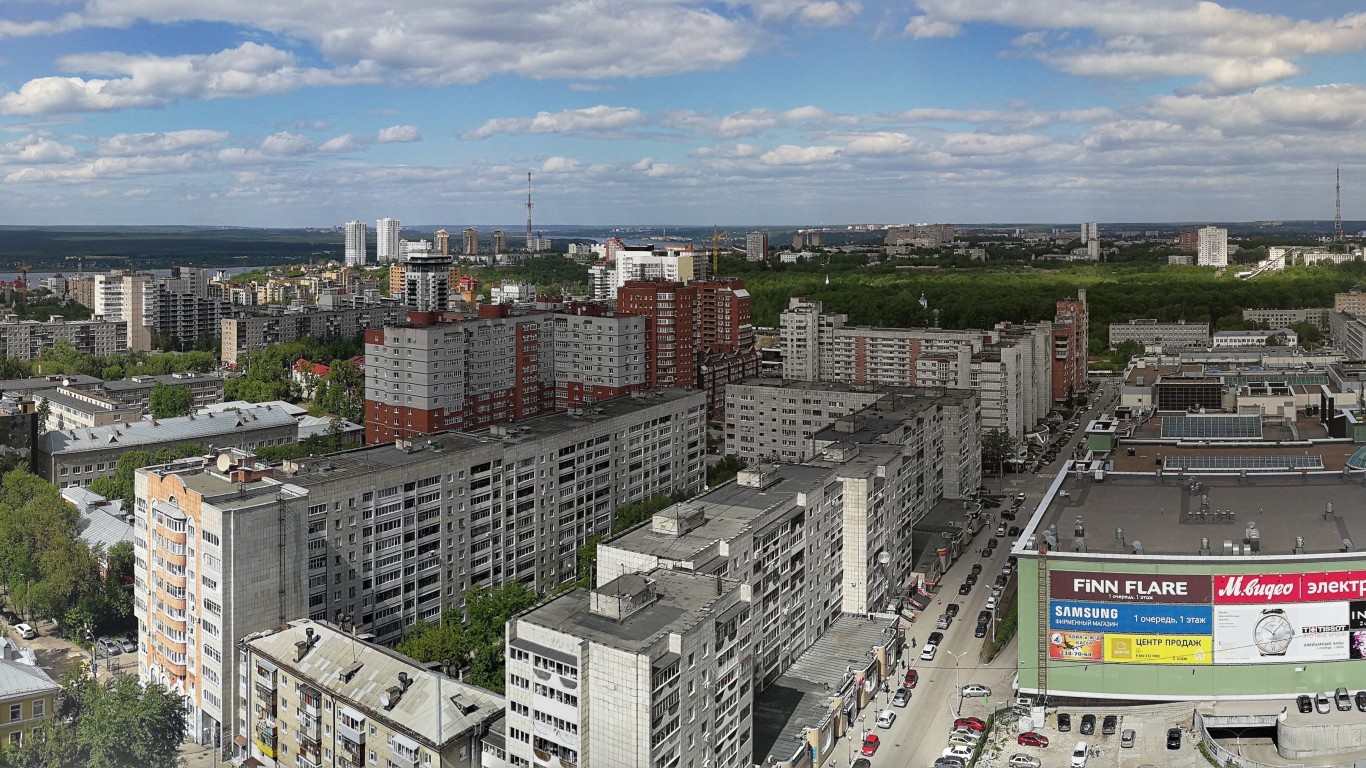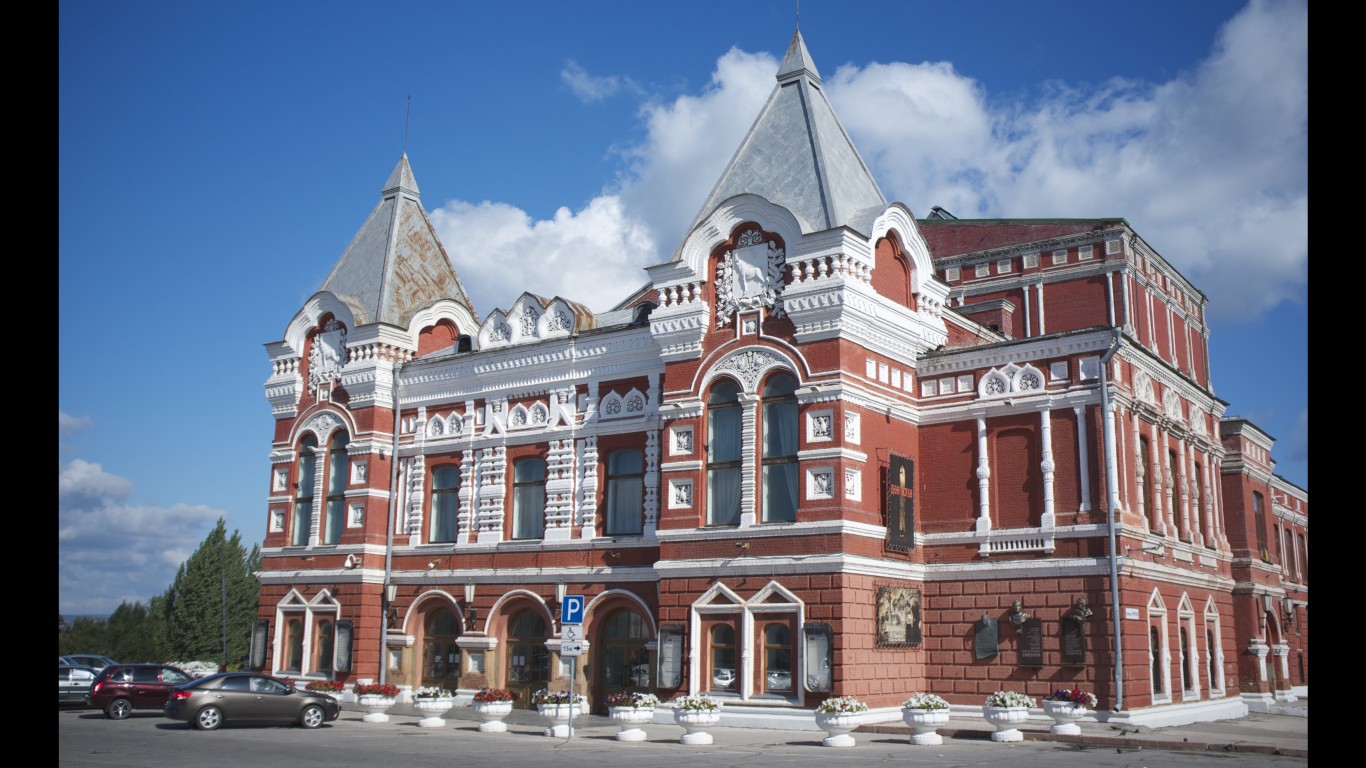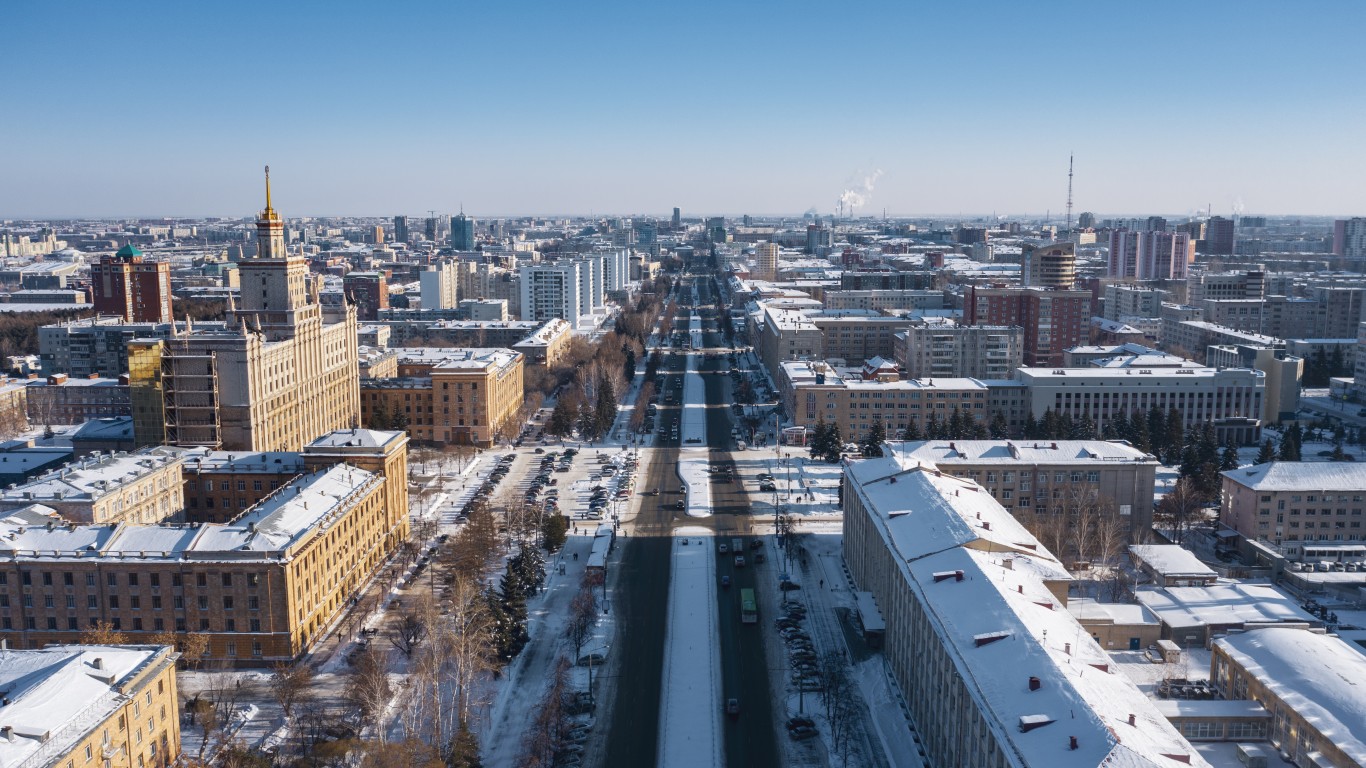
As western allies of Ukraine send more and more weapons to aid the European nation in its fight against Russia, many analysts believe the world is moving closer and closer to World War III. In January, the United States and Germany announced they would send highly advanced tanks to the Ukrainian front, a move that Russia pointed to as a clear provocation, with Russia’s ambassador to Germany calling it an “extremely dangerous decision.”
Russian President Vladimir Putin has made thinly-veiled statements effectively threatening to use nuclear weapons if further provoked. In the summer of 2022, U.S. national security officials said there no reason to be concerned that this geopolitical conflict would lead to all-out nuclear war, but as things continue to escalate, many wonder if nuclear war is a more real likelihood than it has been in decades.
Nuclear weapons have been one of the most existential global threats since the start of the Cold War. Modern nuclear warheads are measured in hundreds of kilotons with far greater firepower than the nuclear bombs used in 1945, when the U.S. bombed two cities in Japan, Hiroshima and Nagasaki, to end World War II.
Recently, 24/7 Wall St. looked at the immediate impact of nuclear attacks on different U.S. cities in what a nuclear attack would do to America’s 25 largest cities.
Now, we examine the consequences of a nuclear attack on 15 of Russia’s largest cities by population. To find how a nuclear detonation could affect Russian cities, 24/7 Wall St. used Nukemap, a site that simulates detonations of nuclear bombs. We have chosen two typical warhead yields, 100 kilotons and 800 kilotons of TNT equivalent. Metropolitan areas are ordered by total population, from smaller to larger. Population data for the urban agglomeration area of each city came from the U.N.
Russia’s 15 largest cities together make up 23% of the country’s population of 143.4 million. Understandably, the most populous Russian cities would sustain the highest number of casualties from a nuclear strike — namely Moscow and Saint Petersburg. City residents who live further away from the population center, especially away from dense concentrations of commercial and residential buildings, would have a greater chance of surviving the immediate effects of a nuclear blast.
In Moscow, 74% of the capital city’s 12.4 million people live outside the blast range of a 100-kiloton nuclear bomb if it were detonated over the Kremlin. The blast from such a nuke would instantly kill an estimated 251,800 people and injure 1.1 million. (A 100-kiloton bomb is far from the most powerful ever built. This is the most powerful nuclear explosion in history.)
Comparatively speaking, the same nuke dropped on the southern Russian port city of Rostov-on-Don, with its population 1.1 million people, would instantly kill almost as many people as the same attack on Moscow — 225,035 — because only 10% of the Rostov population lives outside the blast radius of a 100-kiloton bomb.
Injury and fatality estimates used here are based primarily on the effects of the nuclear blast itself caused by the destructive high-pressure waves of intense heat and pressure emanating from the massive incinerating fireball at ground zero. These estimates do not take into account the collateral casualties from the lingering effects of radiation poisoning and ensuing famine and disease. (This is what a nuclear war would do to the world.)
Here is what a nuclear bomb would do to a Russian city.
Click here to read our detailed methodology.
15. Volgograd, Center
> Population, 2018: 1,014,000
> Casualties from 100 kiloton detonation: 78,300 deaths 167,490 injuries
> Population within blast range of 102.3 sq. miles: 478,293 (47%)
> Casualties from 800 kiloton detonation: 193,990 deaths 287,480 injuries
> Population within blast range of 409.3 sq. miles: 819,725 (81%)
[in-text-ad]

14. Voronezh, Center
> Population, 2018: 1,056,000
> Casualties from 100 kiloton detonation: 151,270 deaths 327,830 injuries
> Population within blast range of 102.3 sq. miles: 868,960 (82%)
> Casualties from 800 kiloton detonation: 393,610 deaths 361,020 injuries
> Population within blast range of 409.3 sq. miles: 953,124 (90%)
13. Perm, Perm Tchaikovsky Opera and Ballet Theatre
> Population, 2018: 1,062,000
> Casualties from 100 kiloton detonation: 137,230 deaths 250,160 injuries
> Population within blast range of 102.3 sq. miles: 677,161 (64%)
> Casualties from 800 kiloton detonation: 305,770 deaths 351,490 injuries
> Population within blast range of 409.3 sq. miles: 964,161 (91%)

12. Krasnoyarsk, Center
> Population, 2018: 1,111,000
> Casualties from 100 kiloton detonation: 116,500 deaths 241,930 injuries
> Population within blast range of 102.3 sq. miles: 695,498 (63%)
> Casualties from 800 kiloton detonation: 302,100 deaths 329,280 injuries
> Population within blast range of 409.3 sq. miles: 897,397 (81%)
[in-text-ad-2]
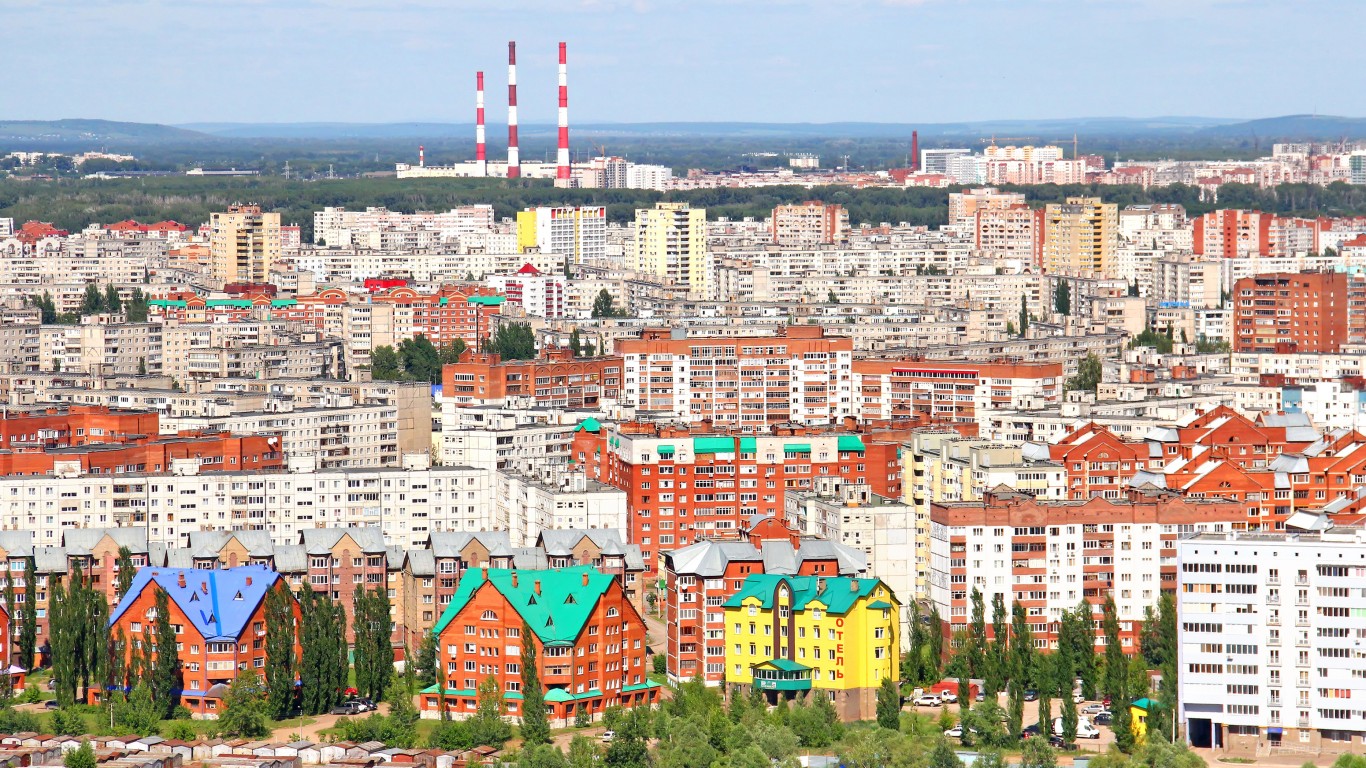
11. Ufa, Local Government Office
> Population, 2018: 1,129,000
> Casualties from 100 kiloton detonation: 206,000 deaths 243,460 injuries
> Population within blast range of 102.3 sq. miles: 668,913 (59%)
> Casualties from 800 kiloton detonation: 350,460 deaths 326,760 injuries
> Population within blast range of 409.3 sq. miles: 1.0 million (89%)

10. Rostov-na-Donu (Rostov-on-Don), Center
> Population, 2018: 1,134,000
> Casualties from 100 kiloton detonation: 225,030 deaths 379,670 injuries
> Population within blast range of 102.3 sq. miles: 1.0 million (90%)
> Casualties from 800 kiloton detonation: 517,080 deaths 430,400 injuries
> Population within blast range of 409.3 sq. miles: 1.2 million (107%)
[in-text-ad]
9. Samara, near Samarskiy District
> Population, 2018: 1,171,000
> Casualties from 100 kiloton detonation: 64,600 deaths 180,420 injuries
> Population within blast range of 102.3 sq. miles: 521,524 (45%)
> Casualties from 800 kiloton detonation: 195,960 deaths 381,420 injuries
> Population within blast range of 409.3 sq. miles: 1.0 million (89%)
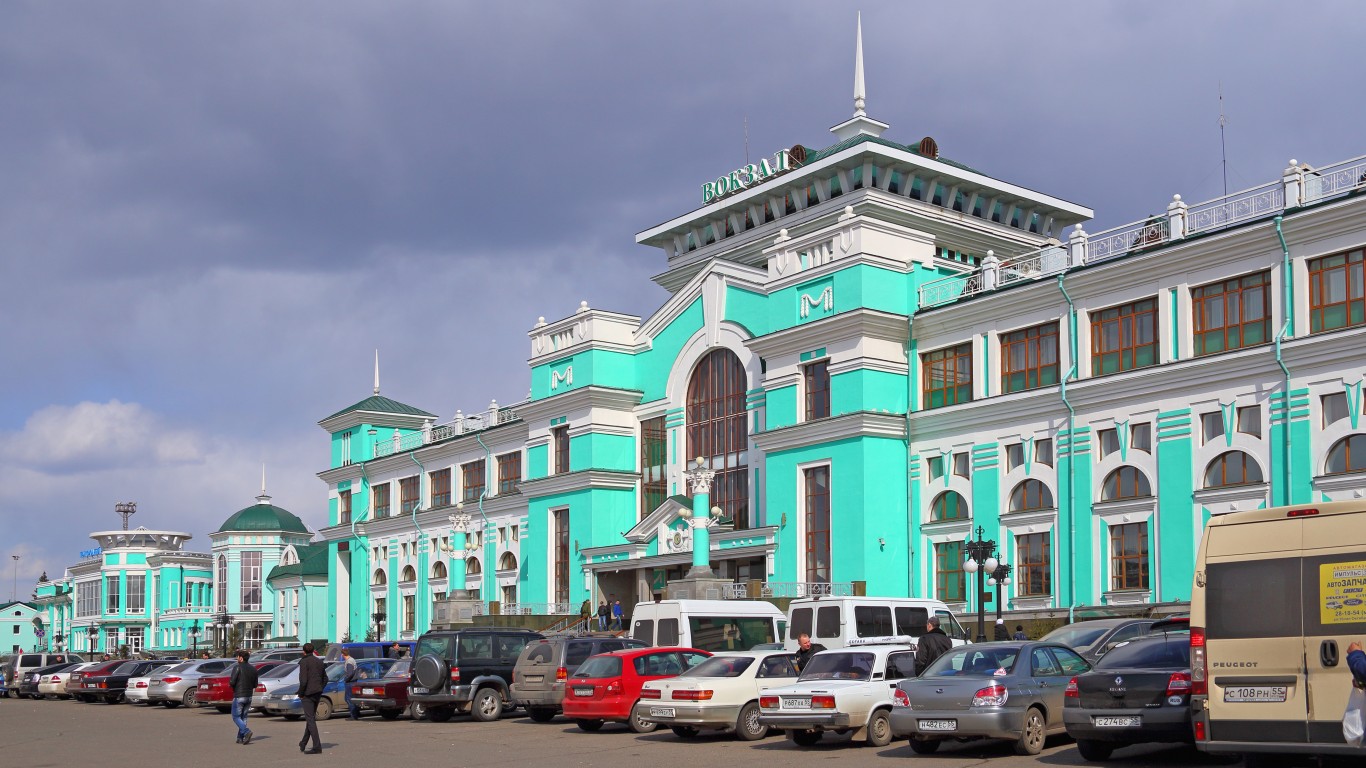
8. Omsk, Center
> Population, 2018: 1,184,000
> Casualties from 100 kiloton detonation: 119,060 deaths 321,180 injuries
> Population within blast range of 102.3 sq. miles: 878,469 (74%)
> Casualties from 800 kiloton detonation: 374,530 deaths 441,890 injuries
> Population within blast range of 409.3 sq. miles: 1.1 million (96%)

7. Chelyabinsk, Center
> Population, 2018: 1,216,000
> Casualties from 100 kiloton detonation: 161,800 deaths 324,960 injuries
> Population within blast range of 102.3 sq. miles: 857,484 (71%)
> Casualties from 800 kiloton detonation: 398,840 deaths 437,820 injuries
> Population within blast range of 409.3 sq. miles: 1.2 million (98%)
[in-text-ad-2]

6. Kazan, Center
> Population, 2018: 1,254,000
> Casualties from 100 kiloton detonation: 157,700 deaths 329,610 injuries
> Population within blast range of 102.3 sq. miles: 878,248 (70%)
> Casualties from 800 kiloton detonation: 407,840 deaths 412,980 injuries
> Population within blast range of 409.3 sq. miles: 1.1 million (88%)

5. Nizhniy Novgorod, Nizhniy Novgorod Kremlin
> Population, 2018: 1,264,000
> Casualties from 100 kiloton detonation: 83,980 deaths 262,990 injuries
> Population within blast range of 102.3 sq. miles: 788,045 (62%)
> Casualties from 800 kiloton detonation: 276,560 deaths 507,280 injuries
> Population within blast range of 409.3 sq. miles: 1.3 million (107%)
[in-text-ad]
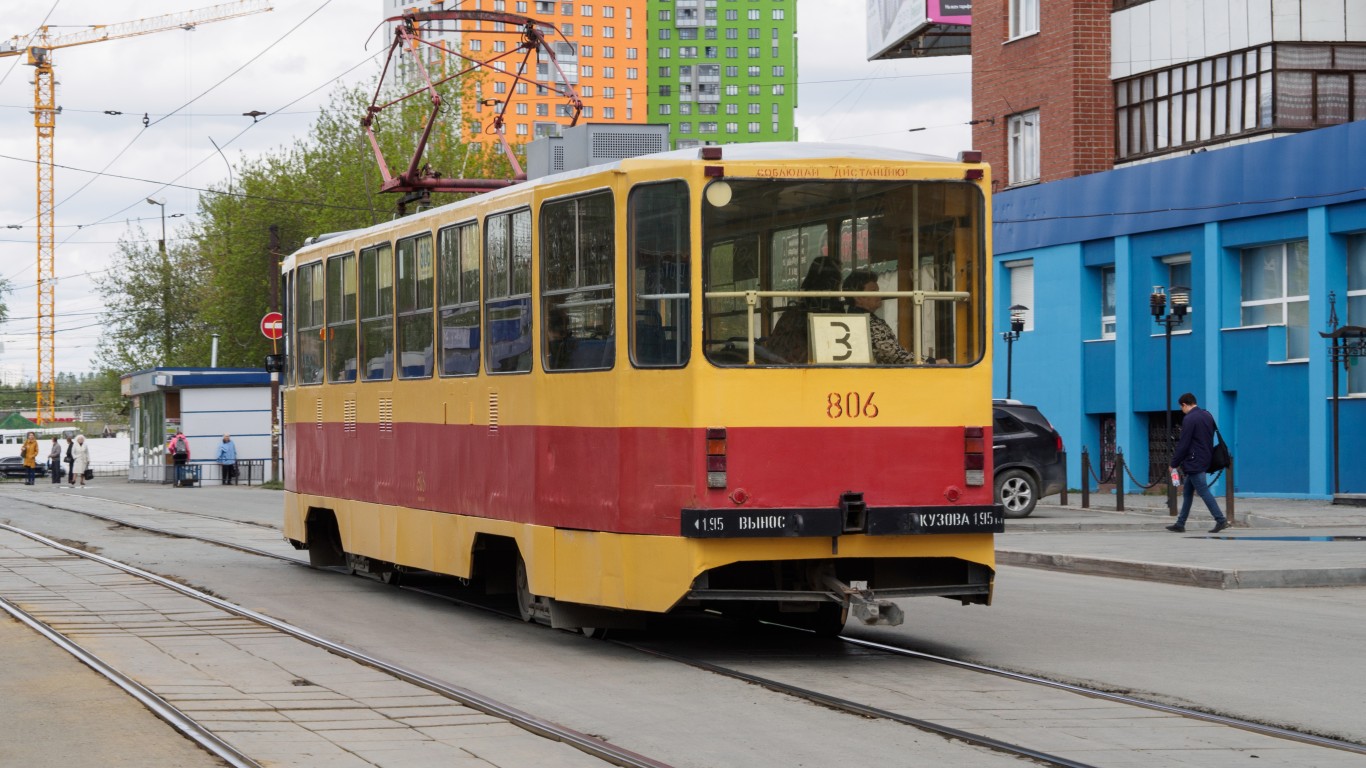
4. Yekaterinburg, Center
> Population, 2018: 1,482,000
> Casualties from 100 kiloton detonation: 201,900 deaths 412,180 injuries
> Population within blast range of 102.3 sq. miles: 1.1 million (77%)
> Casualties from 800 kiloton detonation: 481,810 deaths 518,810 injuries
> Population within blast range of 409.3 sq. miles: 1.4 million (94%)
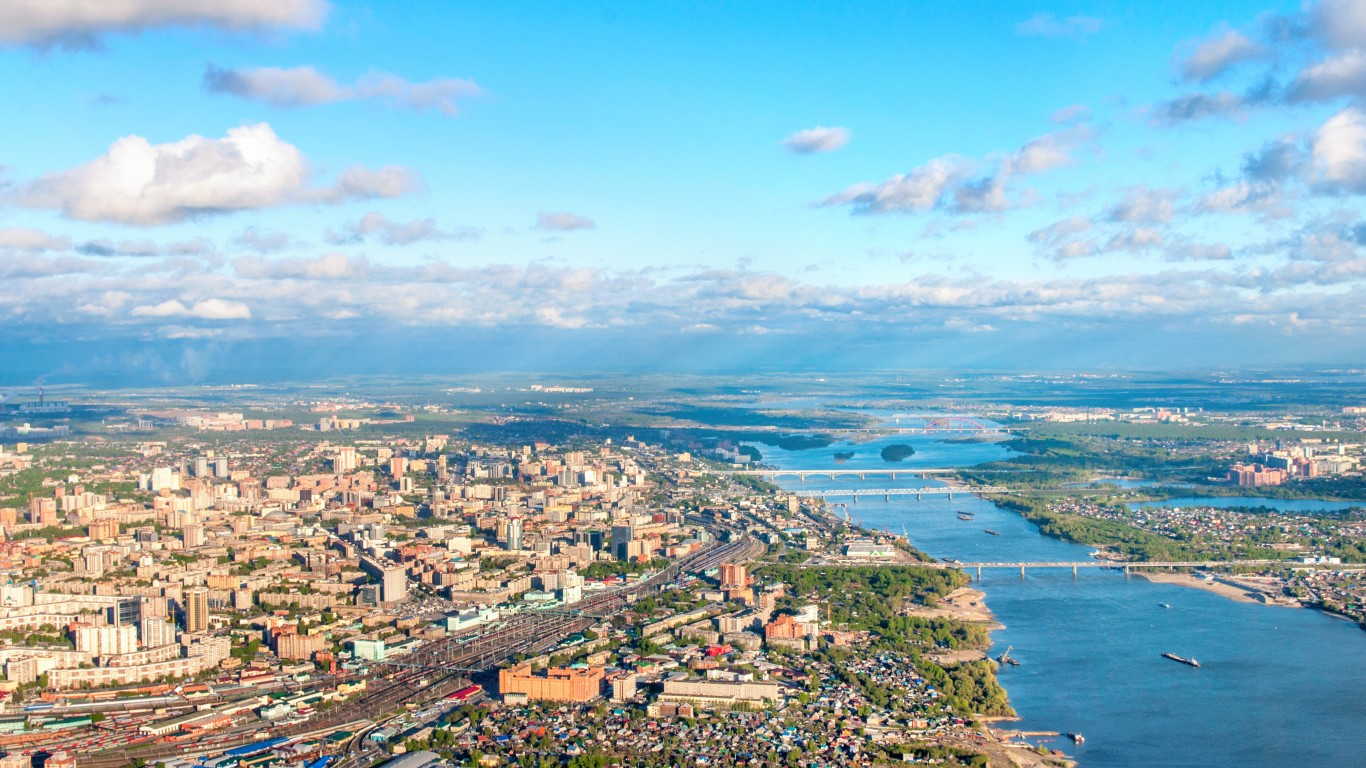
3. Novosibirsk, Oktyabrsky City District
> Population, 2018: 1,636,000
> Casualties from 100 kiloton detonation: 161,650 deaths 387,350 injuries
> Population within blast range of 102.3 sq. miles: 1.1 million (67%)
> Casualties from 800 kiloton detonation: 437,490 deaths 523,530 injuries
> Population within blast range of 409.3 sq. miles: 1.4 million (84%)
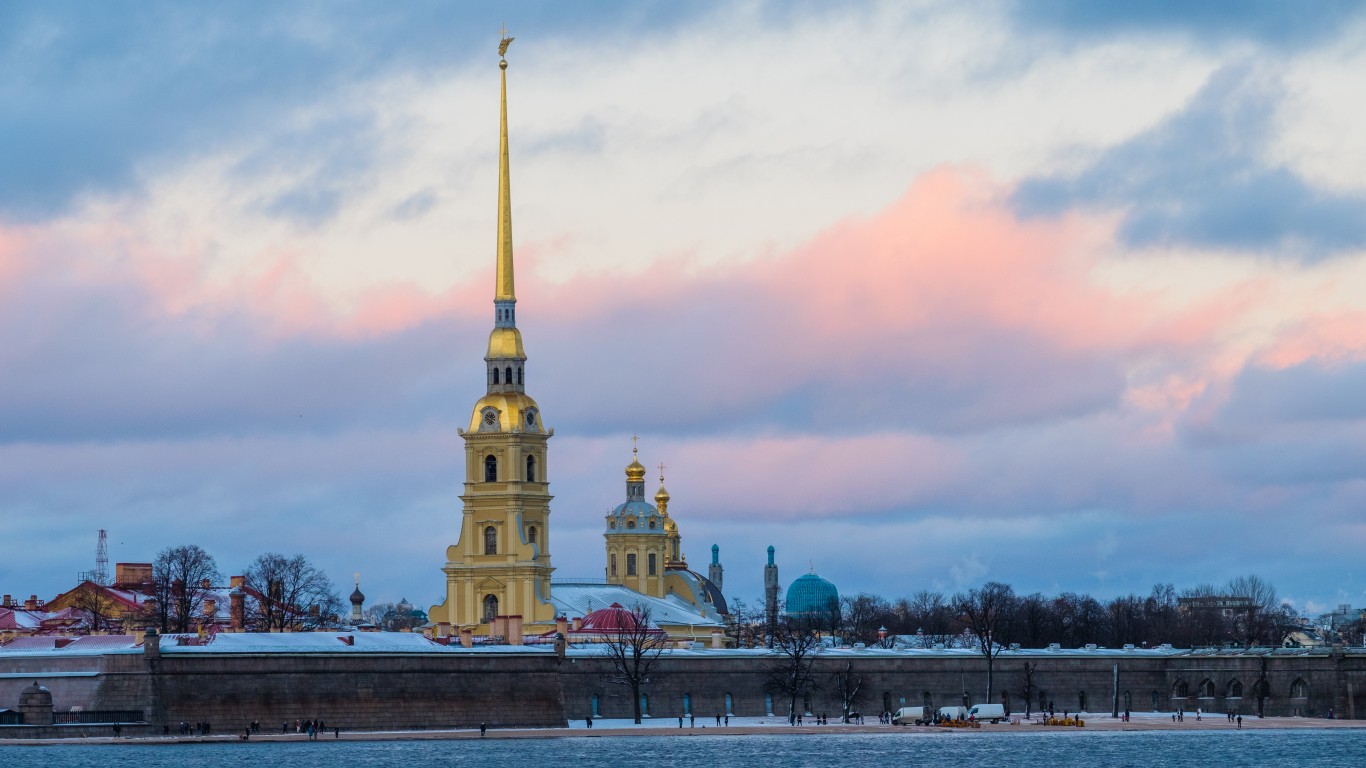
2. Saint Petersburg, Peter and Paul Fortress
> Population, 2018: 5,383,000
> Casualties from 100 kiloton detonation: 267,690 deaths 755,420 injuries
> Population within blast range of 102.3 sq. miles: 2.1 million (39%)
> Casualties from 800 kiloton detonation: 861,500 deaths 1,424,960 injuries
> Population within blast range of 409.3 sq. miles: 3.7 million (70%)
[in-text-ad-2]

1. Moscow (Moskva), Kremlin
> Population, 2018: 12,410,000
> Casualties from 100 kiloton detonation: 251,800 deaths 1,098,310 injuries
> Population within blast range of 102.3 sq. miles: 3.4 million (28%)
> Casualties from 800 kiloton detonation: 1,050,270 deaths 3,332,670 injuries
> Population within blast range of 409.3 sq. miles: 9.5 million (76%)
Methodology
To find how a nuclear detonation could affect Russia’s 15 largest cities, 24/7 Wall St. used Nukemap, a site that simulates detonation of nuclear bombs. We have chosen two typical warhead yields, 100 kilotons and 800 kilotons of TNT equivalent, detonated in the air over the center (commercial area or downtown), or important landmarks in these cities.
- Nuclear bombs with 100-kiloton yield detonated in the air at 0.9 miles altitude have a fireball radius of 0.24 miles and a light blast damage radius of 5.7 miles, for a total affected area of 102.3 square miles.
- Nuclear bombs with 800-kiloton yield detonated in the air at 1.8 miles altitude have a fireball radius of 0.55 miles and a light blast damage radius of 11.4 miles, for a total affected area of 409.3 sq. miles.
We also added the average population within the light damage blast range averaged over a 24-hour period. Light damage can be caused by an overpressure – the pressure caused by a shock wave exceeding normal atmospheric pressure – of 1 psi. (Psi is a measure of pressure equaling a pound of force per square inch.) All data is from Nukemap, except for population figures.
Population figures came from the United Nations’ Population Division The World’s Cities in 2018. Each city population is for the urban agglomeration area – the contiguous urban area, or built-up area. These are the 15 Russian cities with populations over 1 million.
The Average American Is Losing Momentum On Their Savings Every Day (Sponsor)
If you’re like many Americans and keep your money ‘safe’ in a checking or savings account, think again. The average yield on a savings account is a paltry .4%1 today. Checking accounts are even worse.
But there is good news. To win qualified customers, some accounts are paying more than 7x the national average. That’s an incredible way to keep your money safe and earn more at the same time. Our top pick for high yield savings accounts includes other benefits as well. You can earn a $200 bonus and up to 7X the national average with qualifying deposits. Terms apply. Member, FDIC.
Click here to see how much more you could be earning on your savings today. It takes just a few minutes to open an account to make your money work for you.
Thank you for reading! Have some feedback for us?
Contact the 24/7 Wall St. editorial team.
